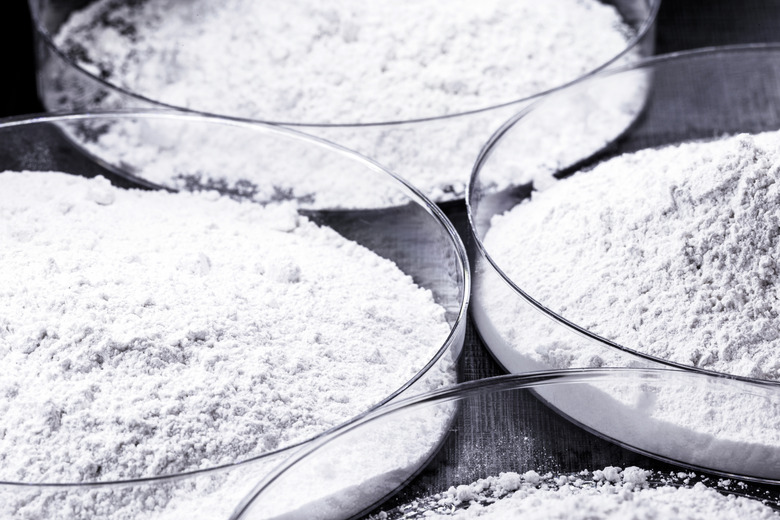What Is Sodium Hydrogen Carbonate?
Sodium hydrogen carbonate (NaHCO3) or sodium bicarbonate, is a crystalline chemical compound commonly known as baking soda that can be produced industrially. The compound is also used to produce sodium carbonate. Both have a variety of uses.
The Solvay Process
The Solvay Process
The Solvay Process is a method by which ammonia, carbon dioxide, water and brine solution is used to create sodium hydrogen carbonate. The procedure is inexpensive because it produces leftover ammonia and carbon dioxide, which can be re-used in the process.
Uses
Uses
Sodium hydrogen carbonate finds use in fire extinguishers, toothpaste and medicine as an antacid to treat indigestion and heartburn. It can also absorb odors, which finds use when people leave open boxes of baking soda in their refrigerators.
In Baking
In Baking
Baking powder is composed of sodium hydrogen carbonate as well as weak acids and starch to prevent caking. Sodium hydrogen carbonate reacts with the weak acid, releasing the carbon dioxide that makes batter and dough rise.
Sodium Carbonate
Sodium Carbonate
Sodium hydrogen carbonate is also used to create sodium carbonate (Na2CO3). Heating the sodium hydrogen carbonate will produce the sodium carbonate as well as carbon dioxide, which can be further recycled in the Solvay Process.
Uses of Sodium Carbonate
Uses of Sodium Carbonate
Sodium carbonate is a strong base finds use in laundry detergent to prevent the ions in hard water from staining clothing. Sodium carbonate can also be found in soap, paper and glass.
References
Cite This Article
MLA
Djeljosevic, Danny. "What Is Sodium Hydrogen Carbonate?" sciencing.com, https://www.sciencing.com/sodium-hydrogen-carbonate-6174496/. 1 April 2010.
APA
Djeljosevic, Danny. (2010, April 1). What Is Sodium Hydrogen Carbonate?. sciencing.com. Retrieved from https://www.sciencing.com/sodium-hydrogen-carbonate-6174496/
Chicago
Djeljosevic, Danny. What Is Sodium Hydrogen Carbonate? last modified March 24, 2022. https://www.sciencing.com/sodium-hydrogen-carbonate-6174496/
